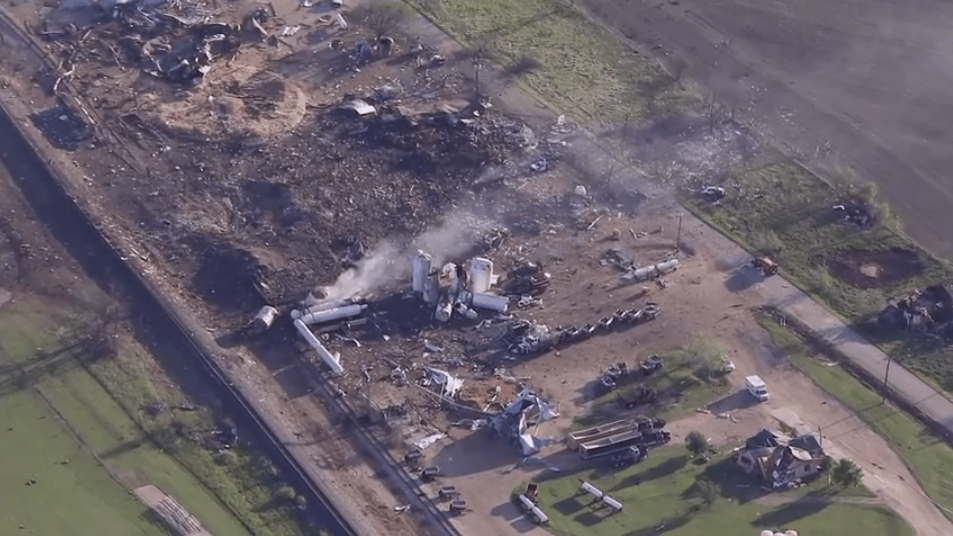West, Texas
It has been six months since the fertilizer plant here exploded, killing 15, injuring more than 200 and leveling a swath of this small town 70 miles south of Fort Worth. The debris has been hauled off, rebuilding is underway, and the Occupational Safety and Health Administration this month handed down $118,300 in fines against West Fertilizer. OSHA is a late arrival, no OSHA inspector had visited the fertilizer plant since 1982. Don’t blame the agency. A study by the Center for Effective Government found that between 1981 to 2001, the number of workplaces in the United States has doubled while the number of OSHA inspectors has not kept pace.
Since the disaster in West, there have been at least 10 serious chemical facility accidents in the U.S. I wrote about one of the 10 in the September 1 issue of the Spectator, the June 13 explosion at the Williams Olefins vinyl plant in Geismar, Louisiana, which killed two and injured 77.
| A new poll found overwhelming support for safety measures at chemical plants and the only blowback would come from the chemical, petrochemical, and oil interests and the mostly Republican members of Congress who support them. |
In Geismar, I interviewed residents of “fence communities” surrounding chemical plants and refineries in industrial zone known as “Cancer Alley” (or “Bhopal on the Bayou”). When the Williams Olefin plant blew, most of them went into their houses (trailer homes), turned off their air conditioners, and sheltered in place until the wind dissipated the toxic plume.
While reporting the Geismar story, I found that many of these of accidents can be prevented if the EPA Administrator were to issue a “finding” directing the companies to take certain safety measures: upgrading outdated technology, substituting safer chemicals, such as sulfuric acid in place of hydrofluoric acid in refineries, or reducing stockpiles of dangerous chemicals.
The explosion at West, for example, could have been prevented if calcium carbonate had been added to the ammonium nitrate that exploded, de-weaponizing the commonplace fertilizer as is required by most European governments.
A finding is an administrative directive that implements regulations and requires no legislation. (No regulation of chemical plants or refineries can make it through the Republican House.) It is policy change by the stroke of the pen, if EPA Administrator Gina McCarthy decides to move on it.
In the September 1 story, I described a coalition of 100 labor and environmental groups urging McCarty to act. They argue that by requiring modern technology and changes in chemicals stockpiled on site, the EPA would reduce the threat of terrorism at these facilities.
The Center for American Progress has released a report documenting the risks in 101 of the nation’s most dangerous sites, which together put the lives of 80 million Americans at risk.
Sites such as Marathon Petroleum in Saint Paul Park, Minnesota, which puts 2.2 million people in danger, can be made much safer if the EPA administrator acts.
The coalition is urging citizens to write the Obama administration to issue a finding. A youtube video recaps congressional debate on chemical-plant safety since 2001, which has yielded nothing, and Senator Barack Obama’s statement that “IST is a critical part of chemical plant security, without it we’re leaving a huge gap in our ability to manage the risk that these facilities represent.” (IST is “inherently safer technology.”)
As “soft targets,” these 101 high-risk facilities near population centers are dangerous. But terrorism is a red herring. The 15 people killed at West weren’t killed by terrorists. The two plant workers killed at Geismar and the 200 individuals hospitalized weren’t victims of terrorist attacks.
In 1987, before any terrorist attacks on U.S. citizens at home, I covered a hydrofluoric acid leak in Texas city that resulted in 100 people hospitalized and persistent health problems for more than 3,000 individuals, most who had retreated to their houses, as a gas cloud cooked St. Augustine Grass lawns and seared the lungs of anyone unfortunate enough to be breathing.
While I find the terrorist argument disingenuous, I find the campaign to require safer chemicals and inherently safer technology compelling. No one I talked to in Geismar mentioned Al Qaeda. They were, however, worried about what drifts across hurricane fences enclosing plants owned by Williams Olefins, Huntsman Chemicals, Shell Chemical, Rhone-Poulenc, et al.
Polling released by the BlueGreen Alliance this month found overwhelming support for safety measures at chemical plants and the only blowback would come from the chemical, petrochemical, and oil interests and the mostly Republican members of Congress who support them. EPA Administrator McCarthy will not issue a finding on an issue as consequential as this one without the consent of the president. The White House switchboard number is 202-456-1414.
Lou Dubose is the editor of The Washington Spectator.


